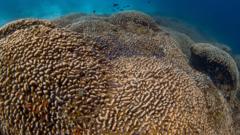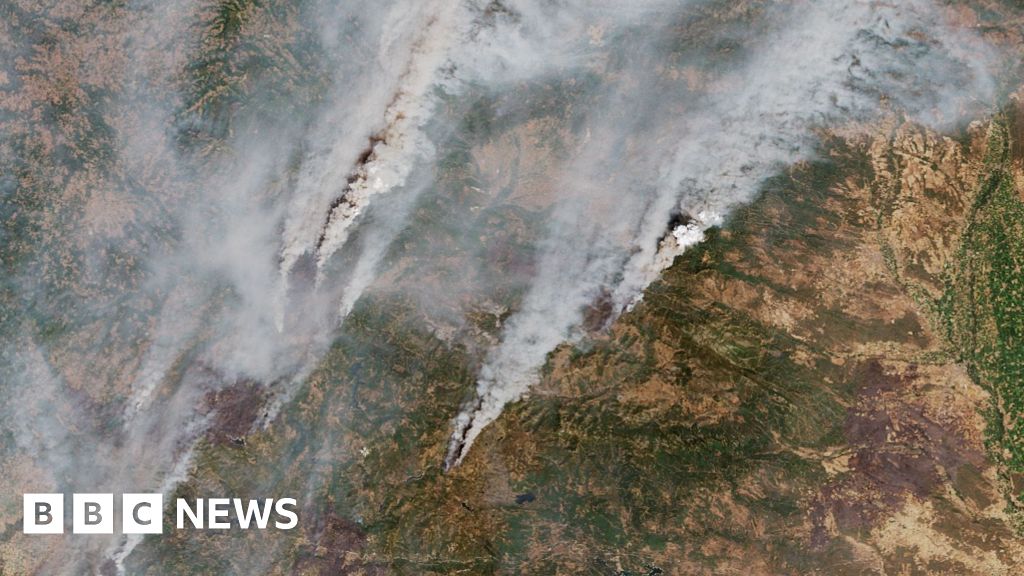The Pacific Ocean has unveiled its largest coral ever recorded, a remarkable find that scientists hope will illuminate the pressing need for conservation efforts against climate change. The colossal coral, discovered off the coast of the Solomon Islands, may be over 300 years old and surpasses the size of a blue whale, raising excitement among researchers.
The discovery was serendipitous, occurring during an exploration by Manu San Felix, a videographer working with National Geographic's Pristine Seas team. Initially searching for a shipwreck, San Felix unintentionally encountered the coral, which he described as reminiscent of a "cathedral underwater." He expressed profound admiration for the ancient organism, noting its resilience in the face of time and change.
Scientists measured the coral specimen underwater, noting its impressive dimensions of 34 meters in width, 32 meters in length, and 5.5 meters in height. This remarkable find comes at a critical time when coral reefs worldwide are increasingly threatened by rising ocean temperatures and climate change, despite their vital role in supporting marine life and billions of people’s livelihoods.
The coral’s location in deeper waters may have protected it from the more extreme conditions facing shallow reefs, leading researchers to believe that this healthy coral oasis demonstrates a beacon of hope in an otherwise grim scenario. Participating scientist Eric Brown remarked on the well-being of the coral, contrasting it with the nearby damaged reefs suffering from the ongoing impacts of global warming.
The unveiling of this extraordinary coral coincides with the UN climate talks COP29 in Baku, Azerbaijan, where Solomon Islands Climate Minister Trevor Manemahaga highlighted the discovery as a treasure worth protecting. He emphasized the critical economic implications of coral reefs for island nations, stressing the dependence on marine resources and the detrimental effects of logging activities that lead to water pollution.
As the coral, classified as Pavona clavus, serves as habitat for diverse marine creatures, scientists aim to leverage its long lifespan to understand historical ocean conditions. However, a recent report indicated that nearly half of warm-water coral species are threatened with extinction, signifying a stark increase since the last assessment in 2008.
The future of coral ecosystems and consequently tourism in the Pacific Islands hangs in the balance, as nations plead for increased financial support to combat climate change. With calls for sustainable practices and ongoing efforts at international climate forums, the fate of this magnificent coral and numerous others depends on concerted global action.



















